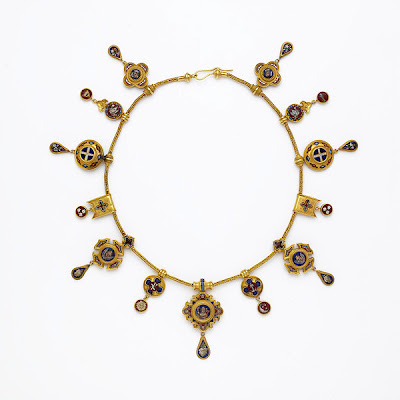 |
| Micromosaic and gold necklace Castellani, 1870 The Victoria & Albert Museum |
The Roman jewelry company of Castellani is considered as one of the first and finest makers of jewelry based on various ancient styles which had been uncovered through then-recent archaeological findings.
This necklace of gold, made in 1870, shows Castellani’s fine micromosaic work with its woven chain of diverse-shaped pendants matching on each side. The medallions are arranged symmetrically on the chain and depict various symbols of peace, starting at hook clasp: a cherub, doves of peace, two crosses, another cherub and the Christian chi-rho motif; the central pendant with Cupid. The large pendants are hung with smaller pendants which show: roses, christian symbols, flowers, bunches of grapes and the moon and sun.
This necklace is part of an import parure which was once owned by Rosalinde Gilbert who, along with her husband, Sir Arthur, donated this suite along with their impressive collection of gems, gold, snuffboxes, enamels, portrait miniatures and other assorted treasures to the V&A.



No comments:
Post a Comment